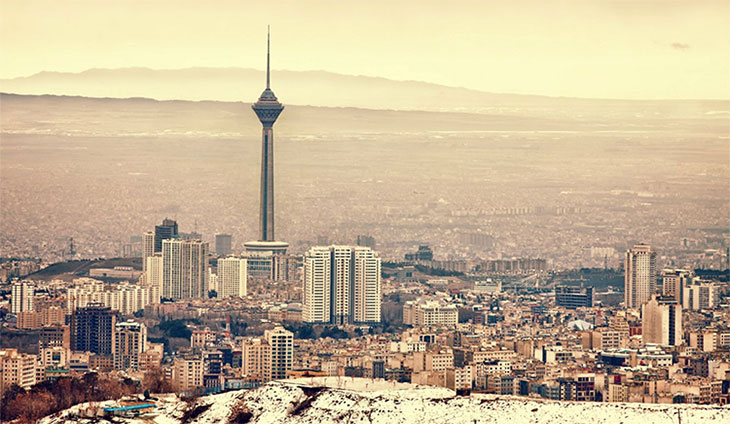The reason why Iran's capital Tehran is sinking cannot recover
The land of Tehran, home to 15 million Iranians, is the largest city in West Asia, sinking at tremendous speed. High-resolution satellite imagery shows that some areas of Tehran sink to 25cm each year.
Scientists have studied data about this city during the period 2003 - 2017 and found that about 10% of the central area as well as the northwest of the city is unusually quickly subsided.

Tehran is paying dearly for the depleted groundwater.
Ali Beitollahi - Head of seismic department, Tehran Construction Research Center - said one of the consequences of ground subsidence was the sudden appearance of cracks and giant wormholes in some places , Specifically, a rural resident of the city suddenly dropped to a hole 6 meters deep after the soil cracked where he was standing. Fissures that appear near fields also destroy crops because they drain all the irrigation water to dry areas.
In a recent study, scientists have discovered that Tehran's current subsidence rate is among the highest in the world.The main reason is because groundwater becomes hollow due to drought, dam construction and population explosion, while rainfall infiltrating into the soil is not enough to compensate for depleted groundwater. Therefore the ability to cure the landslide situation here is almost impossible.
Tehran is not the only city being subsided. Satellite observations show that the Italian city of Venice, the western state of Texax and the coastal state of Louisiana, or California's San Joaquin valley and the US San Francisco international airport are also the fastest sinking places. gender.
Previous studies have shown that the loss of groundwater is the cause of Tehran's sinking since the early 2000s. The first is in agricultural lands. After that, from 2003 onwards began to go to the eastern urban areas, where it could be seen that the ground was falling in that the buildings were tilted, roads were sunk and cracked.
Illegal drilling for groundwater is the main reason for depleting this resource and increasing the risk of land subsidence. The government of Tehran is trying to take care of illegal drilling cases, but besides 100,000 wells that have been discontinued, there are still 30,000 more in operation. If the land subsidence continues, the railway, bridges, pipelines for gas and oil, and electrical infrastructure will be the next objects of damage in this city.
- Schools and agencies in Tehran are closed because of pollution
- 'Super mouse' is as big as a cat because of radiation
- Pollution, Iran's capital closed schools
- All schools in Tehran are closed because of pollution
- Video: Terrifying scene when stuck in a sinking ship
- Thailand's capital Bangkok will be engulfed by the sea
- Announcing the first map of the sinking of the Titanic
- The real reason why the ancient Khmer Empire was forced to move the capital, only to make a historical legend
- Little-known mysteries about the legendary Titanic
- The secret escapes when boats sink in the sea
- Announcing the cause of the tragedy sinking the Titanic
- Indonesia decided to build a huge sea wall to save the capital
 'Fine laughs' - Scary and painful torture in ancient times
'Fine laughs' - Scary and painful torture in ancient times The sequence of numbers 142857 of the Egyptian pyramids is known as the strangest number in the world - Why?
The sequence of numbers 142857 of the Egyptian pyramids is known as the strangest number in the world - Why? History of the iron
History of the iron What is alum?
What is alum?